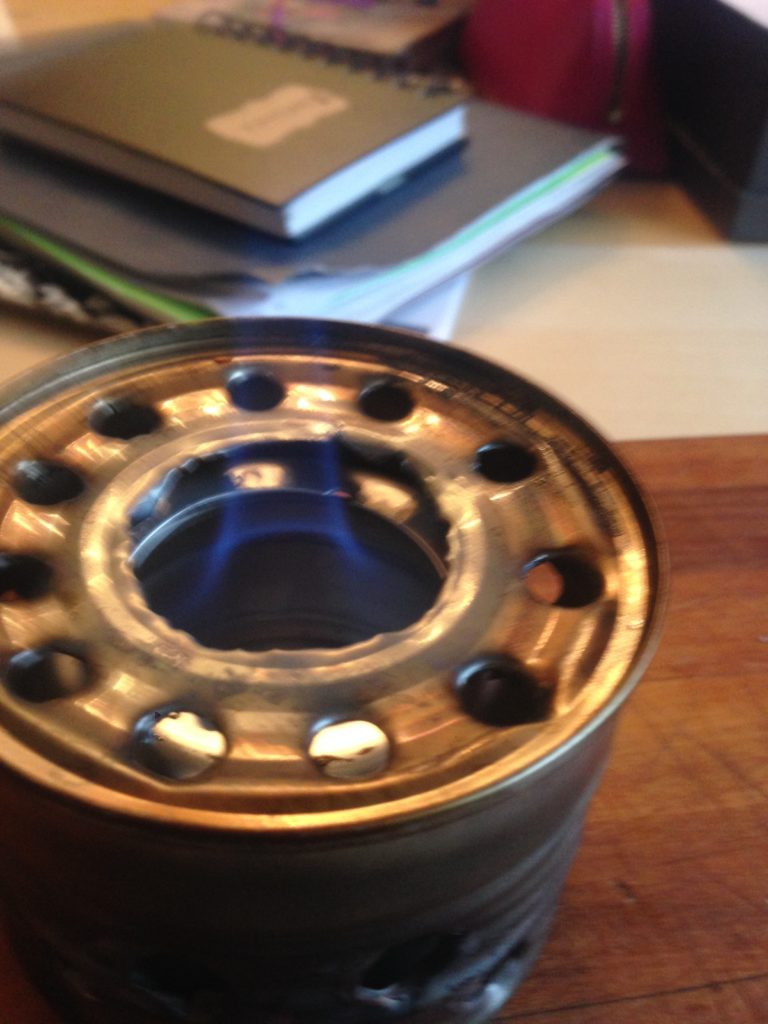A can of beans and a candle tin plus a few well-placed drill holes can earn you a super-lightweight and very affordable camp cooking solution while on bike tour.
For years I’ve used a trusty Coleman stove that uses those enormous green propane canisters as my bikepacking stove of choice. As I mentioned in past blog posts, there are sometimes things you like so much that you’re willing to adopt more weight and bulk.
Well, I may have changed my tune. That stove was huge:
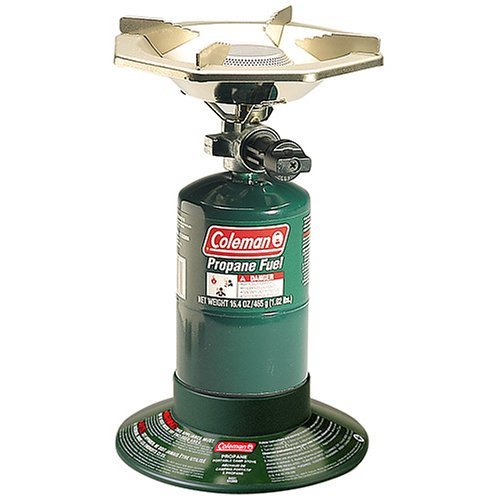
It boiled water super fast, and those green propane canisters are easy to find and inexpensive. But, whoa with the huge. I needed a solution that maintained some of these pros, but shed some weight and bulk.
Enter the world of the DIY alcohol stove. Here’s the idea: high proof alcohol burs hot, relatively cleanly, and is super efficient from a weight to burn perspective. Plus, it stores easily in plastic bottles, evaporates quickly and cleanly if it manages to leak, and tends not to be as explosive as propane, butane… all your basic -anes. Denatured alcohol or even Everclear is a great option, but you can even use the yellow bottle version of Heet antifreeze, which is practically ubiquitous at gas stations and other stores in even the smallest of hamlets one bikes through (at least in North America).
Plus, you get to drill cans. More on that in a second.
There are all sorts of ways to make it work, but the most basic version is a stove made of a small can with some holes drilled in to allow air to enter the heated stove to mix with the vaporizing alcohol. Here’s what I did:
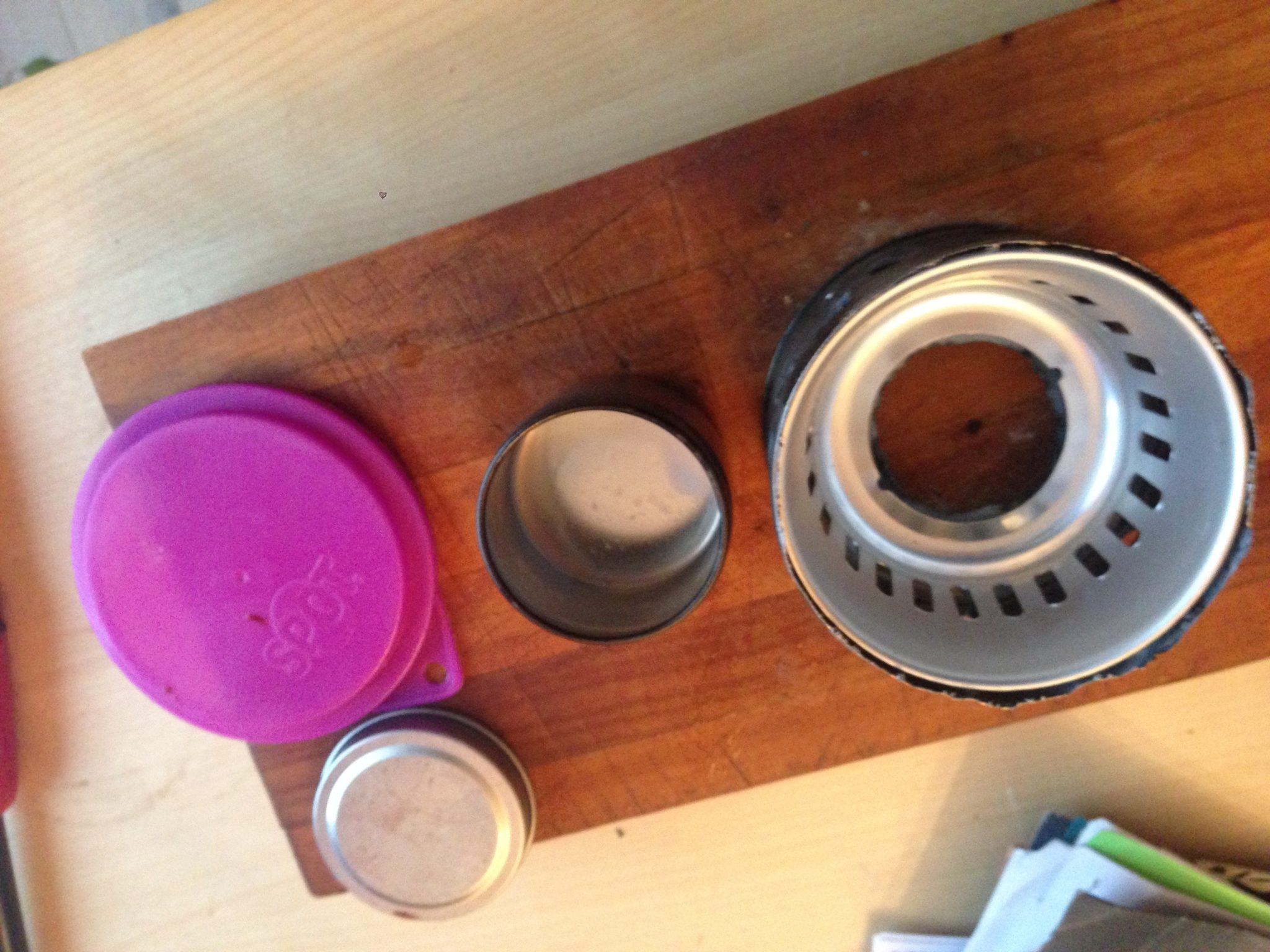
I used a large can of beans, sawed in half with a metal hacksaw blade. I drilled in air holes that look somewhat random, but had more purpose than design aesthetic. I cut a hole in the top to allow the flame to come through to hit the pot (note: important). For the interior, I have an old alcohol lamp insert to create an interor wall which should serve to create more of a wind buffer while still allowing oxygen flow. Inside that is a small candle tin. I saved the top too so I can easily snuff the flame.
Here’s how it all looks together with the stove lit:
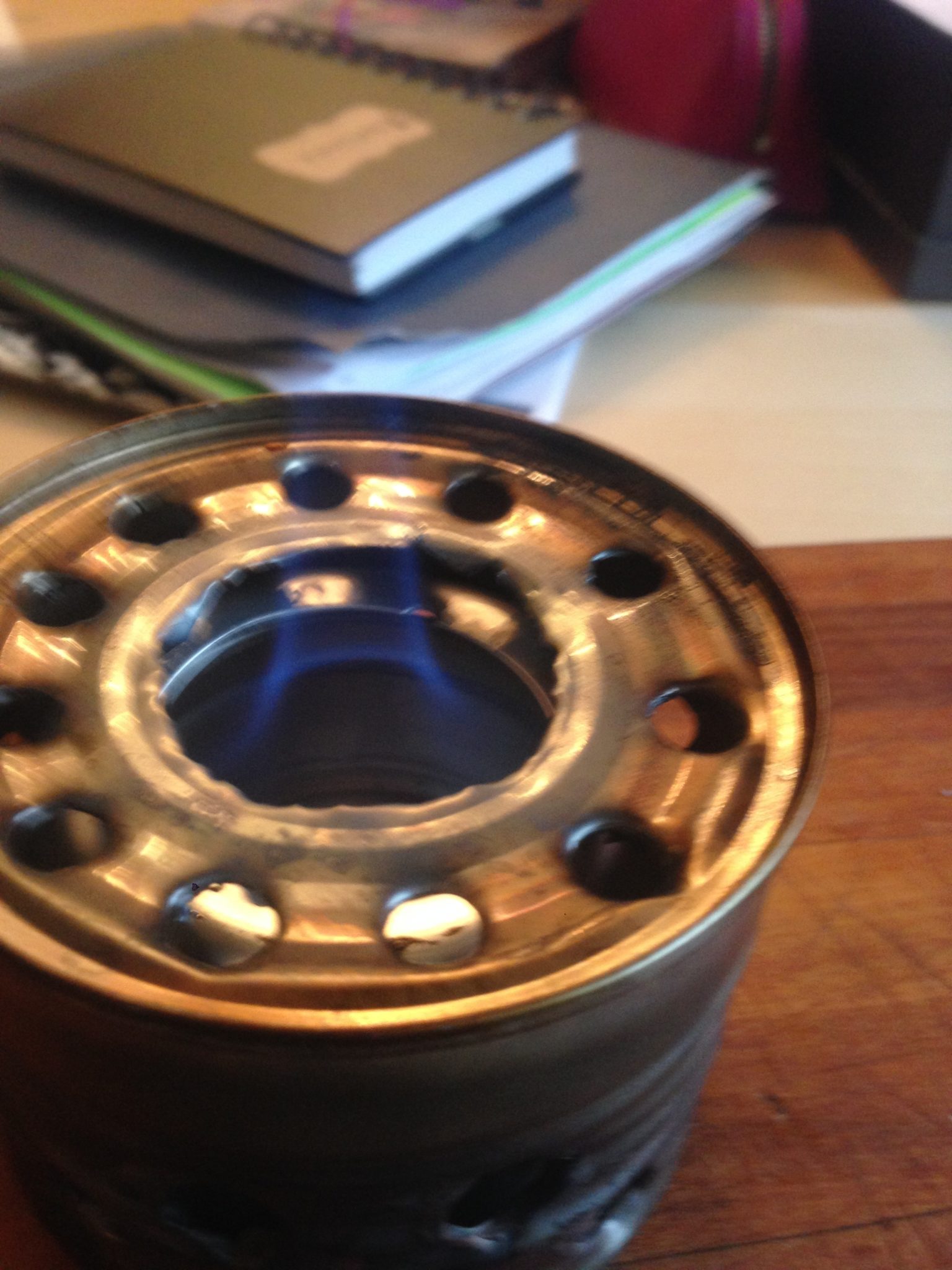
This is the sturdy look with my cook-kit on top – note it has a really nice “seal” to it as the pot fits the can-top perfectly:
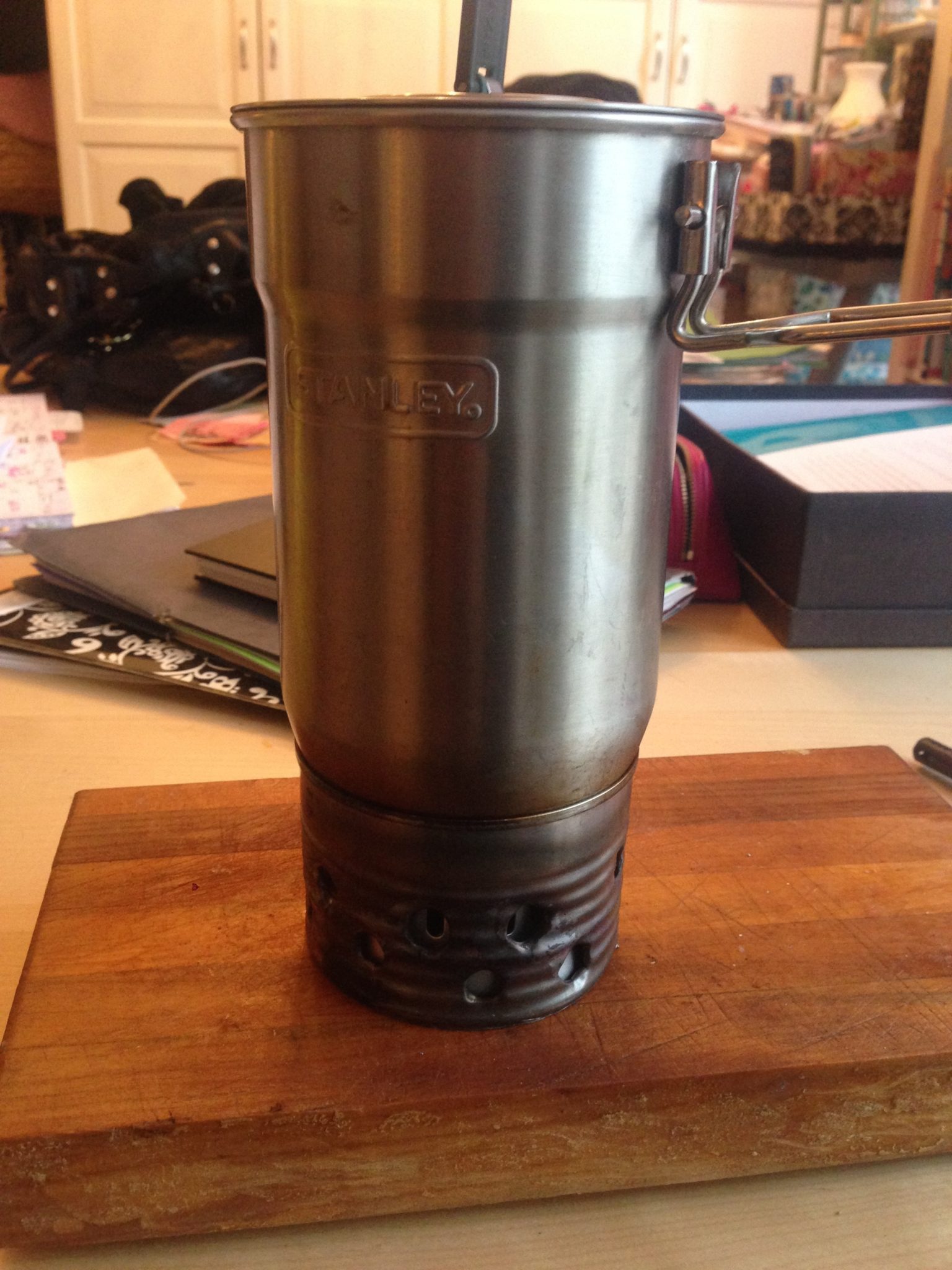
Most importantly, check out how nicely it all packs together. I used a plastic cover designed for keeping cans of opened cat food fresh to seat the bottom side and keep the internals together:

If you haven’t checked out Zen and the Art of the Alcohol Stove yet, do yourself a favor and check it out. If you’re at all a DIYer and into the idea of this, it’ll keep you entertained with ideas for hours.
More on the stove performance as I report from tour next week!
